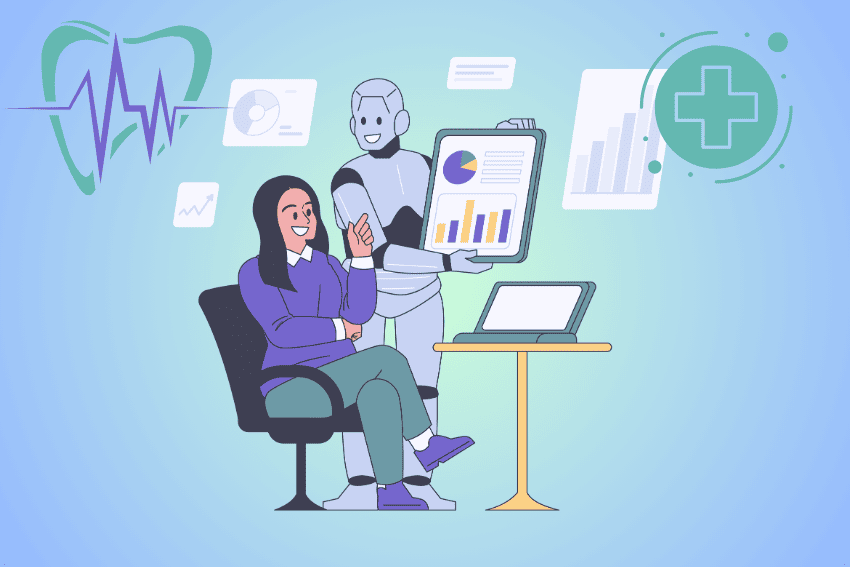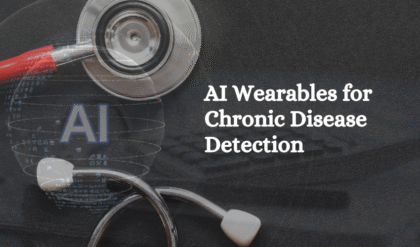AI Predictive Analytics in Healthcare is transforming the way medical professionals diagnose, treat, and manage patient care. By leveraging advanced algorithms and vast datasets, this technology enables healthcare providers to anticipate health risks, optimize treatments, and improve patient outcomes. In this article, we’ll explore how AI predictive analytics works, its applications, benefits, challenges, and what the future holds for this game-changing innovation.

What is AI Predictive Analytics in Healthcare?
At its core, AI predictive analytics uses machine learning (ML) models to analyze historical and real-time data, identifying patterns and predicting future outcomes. In healthcare, this means processing patient records, medical imaging, genomic data, and even wearable device metrics to forecast health events. For example, AI can predict the likelihood of a patient developing chronic conditions like diabetes or heart disease, enabling early intervention.
Unlike traditional analytics, which often focuses on describing past events, AI predictive analytics in healthcare looks forward. It combines structured data (like lab results) with unstructured data (like doctor’s notes) to generate actionable insights. This capability is powered by advanced algorithms, including neural networks and natural language processing (NLP), which allow systems to learn and improve over time.
How Does It Work?
AI predictive analytics in healthcare follows a structured process:
- Data Collection: Systems gather data from electronic health records (EHRs), medical devices, and external sources like social determinants of health (e.g., lifestyle or socioeconomic factors).
- Data Processing: Algorithms clean and organize this data, handling missing values or inconsistencies.
- Model Training: Machine learning models are trained on historical data to identify patterns, such as correlations between symptoms and disease progression.
- Prediction and Insights: The trained model generates predictions, such as the risk of hospital readmission or disease outbreak in a community.
- Actionable Recommendations: Healthcare providers receive insights, often integrated into clinical workflows, to guide decision-making.
For instance, an AI model might analyze a patient’s blood pressure trends, genetic predispositions, and lifestyle factors to predict their risk of a heart attack within the next five years. This allows doctors to recommend preventive measures, like lifestyle changes or medication, tailored to the individual.
Key Applications of AI Predictive Analytics in Healthcare
AI predictive analytics is being applied across various healthcare domains, revolutionizing patient care and operational efficiency. Here are some prominent use cases:
Disease Prediction and Prevention
AI models can identify patients at risk of developing chronic diseases like diabetes, cancer, or cardiovascular conditions. By analyzing factors such as family history, lifestyle, and biomarker data, these systems enable early interventions, reducing the burden on healthcare systems.
Hospital Readmission Reduction
Hospitals use AI predictive analytics to identify patients likely to be readmitted within 30 days of discharge. By flagging high-risk individuals, providers can implement targeted follow-up care, reduce readmissions and improving patient outcomes.
Personalized Treatment Plans
AI helps tailor treatments to individual patients by predicting how they’ll respond to specific therapies. For example, in oncology, AI can analyze tumor genetics to recommend the most effective chemotherapy regimen, minimizing side effects and improving survival rates.
Resource Optimization
Hospitals leverage AI to predict patient admission rates, optimize staffing, and manage inventory. During flu season, for instance, AI can forecast patient surges, ensuring adequate beds and supplies are available.
Public Health and Epidemic Forecasting
AI predictive analytics in healthcare has been instrumental in tracking and predicting disease outbreaks. During the COVID-19 pandemic, AI models helped governments anticipate infection spikes and allocate resources like ventilators and PPE.
Benefits of AI Predictive Analytics in Healthcare
The integration of AI predictive analytics into healthcare offers numerous advantages:
- Improved Patient Outcomes: Early detection and personalized interventions lead to better health results.
- Cost Reduction: By preventing complications and optimizing resources, AI reduces healthcare costs for providers and patients.
- Enhanced Efficiency: Automating data analysis frees up clinicians to focus on patient care.
- Proactive Care: Predictive models shift healthcare from reactive to proactive, emphasizing prevention over treatment.
- Scalability: AI systems can process massive datasets, making them suitable for large populations or complex cases.
Challenges and Limitations
Despite its promise, AI predictive analytics in healthcare faces several hurdles:
- Data Privacy and Security: Handling sensitive patient data requires compliance with regulations like HIPAA and GDPR. Breaches or misuse could erode trust.
- Data Quality and Bias: Inaccurate or biased data can lead to flawed predictions, potentially harming patients. For example, if training data underrepresents certain demographics, the model may perform poorly for those groups.
- Integration with Existing Systems: Many healthcare facilities use legacy systems that are incompatible with modern AI tools, requiring costly upgrades.
- Ethical Concerns: Decisions based on AI predictions raise questions about accountability, especially if a model’s recommendation leads to an adverse outcome.
- Interpretability: Complex AI models, often called “black boxes,” can be difficult for clinicians to understand, reducing trust in their predictions.
The Future of AI Predictive Analytics in Healthcare
The future of AI predictive analytics in healthcare is bright, with ongoing advancements poised to address current limitations. Emerging trends include:
- Federated Learning: This approach allows AI models to train on decentralized datasets without compromising patient privacy, improving model accuracy while maintaining security.
- Real-Time Analytics: Wearable devices and IoT integration will enable continuous monitoring and real-time predictions, such as detecting early signs of sepsis in ICU patients.
- Explainable AI: Efforts to make AI models more interpretable will increase clinician trust and adoption.
- Wider Adoption: As AI tools become more user-friendly and cost-effective, smaller clinics and resource-limited settings will increasingly adopt them.
Conclusion
AI predictive analytics in healthcare is reshaping the industry by enabling proactive, personalized, and efficient care. From predicting disease risks to optimizing hospital operations, its applications are vast and impactful. While challenges like data privacy and model interpretability remain, ongoing innovations are paving the way for broader adoption and greater trust. As this technology evolves, it promises to make healthcare smarter, more accessible, and more effective for everyone.
FAQs
What is AI predictive analytics in healthcare?
AI predictive analytics in healthcare uses machine learning to analyze data and forecast health outcomes, such as disease risk or hospital readmissions, enabling proactive care.
How does AI predictive analytics improve patient care?
It identifies at-risk patients, personalizes treatments, and optimizes resources, leading to better outcomes and reduced costs.
What are the challenges of using AI predictive analytics in healthcare?
Challenges include data privacy, biased datasets, integration with legacy systems, ethical concerns, and the complexity of AI models.
Is AI predictive analytics widely used in hospitals?
Yes, many hospitals use it for tasks like readmission prediction and resource management, though adoption varies based on resources and infrastructure.
How does AI ensure patient data privacy?
AI systems comply with regulations like HIPAA and use techniques like federated learning to protect sensitive data.





